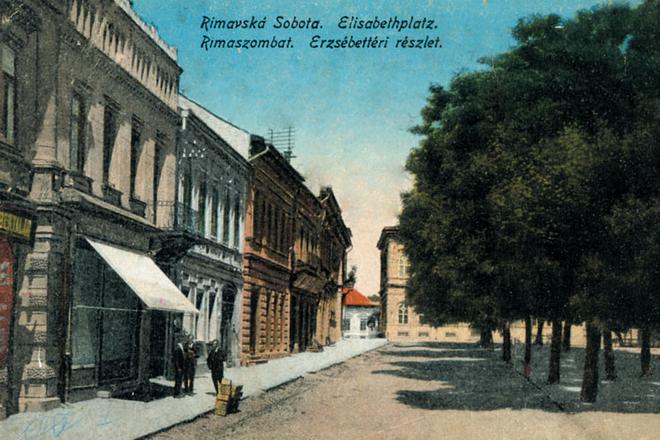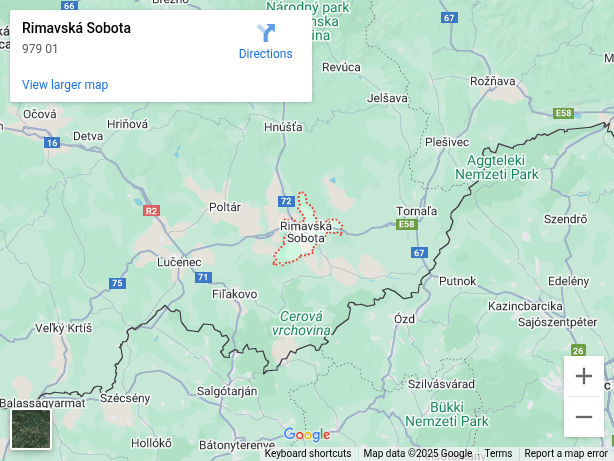Rimavská Sobota was once the centre of the Malohont region that lies between central and eastern Slovakia.
Its name, which translates as “Rimava’s Saturday”, indicates that the region’s main market used to be located there; the names of many Slovak towns and villages are based on this reason. In this case, Rimavská describes the town’s location on the Rimava River; and Sobota is for Saturday, when the market was open.
As a southern city, Rimavská Sobota was on the front lines of the Ottoman invasion, and suffered greatly as a result. The Ottomans captured it twice, with the second occupation lasting from 1596 to 1686.
The town continued to experience religious conflict long after the Ottomans left. In 1769, local Calvinists clashed with Catholics whom they believed were going to tear down their church. The Calvinists ended up losing the church anyway as Empress Maria Theresa ordered it demolished in 1771 as punishment. A Catholic church was built in its place.
This coloured postcard from the time of the monarchy shows Rimavská Sobota’s Main Square, which was then called Alžbetino Square, or Elizabeth’s Square, named after the wife of Emperor Franz Joseph. In the past, it was renowned for its Saturday markets and fairs, but also witnessed religious unrest, a major fire, and a visit from Austrian Emperor Franz Joseph in 1857.
Historical names of Rimavská Sobota’s Main Square
Alžbetino Square (Elizabeth’s Square) – until 1918
Masaryk Square – 1918 to 1938
Alžbetino Square – 1938 to 1939
Horthy Square – 1939 to 1945
Masaryk Square – 1945 to 1955
Gottwald Square – 1955 to 1990
Main Square – since 1990
This article was first published by The Slovak Spectator on August 4, 2008. It has been updated to be relevant today.

 This coloured postcard from the time of the monarchy shows Rimavská Sobota’s main square, which was then called Alžbetino Square. (source: Branislav Chovan)
This coloured postcard from the time of the monarchy shows Rimavská Sobota’s main square, which was then called Alžbetino Square. (source: Branislav Chovan)
